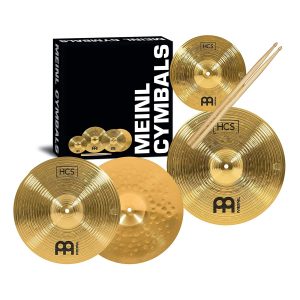
- Durable, Musical Brass Alloy
- Designed For Beginners And Students
- Great For Instructors
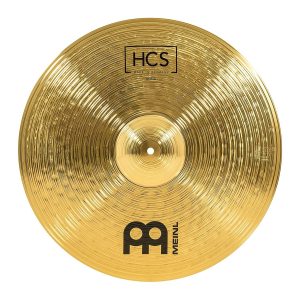
- Durable, Musical Brass Alloy
- Designed For Beginners And Students
- Modern Sounds Fit Any Style
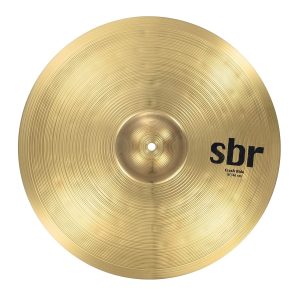
- Controlled Dynamics
- Powerful Accents And Bright Bell
- Tight Sound
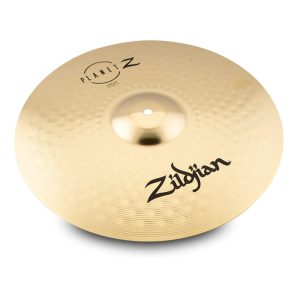
- Bright, Focused Sound Of Brass
- Updated Hammering And Lathing Pattern
- Brilliant Accents, Bright Tones

- Dark, Warm Undertones
- Traditional Zildjian 80/20 Copper-Tin Ratio
- Full-Vodied Stick Sound
Choose the Best Cymbal for Metal
Customer’s Choice: the Best Rated Cymbals for Metal
22 users answered this survey. Please help us improve this review!
Table of Contents
Best Cymbals for Metal – Buyer’s Guide
Nowadays, all of the numerous established cymbal manufacturers have the right cymbals on offer for every drummer and every musical style, whether for modern pop music, rock, jazz, hardcore, hip-hop, metal, world music, experimental music, classical or other styles. All companies divide their product range into different series, which differ from each other in terms of pricing, construction, processing, appearance, and, above all, sound.
Some manufacturers offer optimally matched cymbal sets, which is quite an affordable option, especially for beginners. However, one should always keep in mind: Quality has its price, certain limits should not be undercut if possible. For a hundred dollars, there simply can not be a really good sounding cymbal set. If you are willing to invest a little more money, then it is possible to purchase high-quality cymbals at fair prices. Whether you are a professional, a beginner, or a hobby musician: The offer is very large, and some people spend their whole life looking for the perfect cymbals. At the end of the text, you will find links to cymbal sets of different price ranges and manufacturers.
Cymbals for Metal: Quick Facts
What are cymbals made of?
In most cases, cymbals are made of a copper-tin alloy. The most common mixtures are B20 and B8. The number after the B (for bronze) indicates the percentage of tin, i.e., B20 = 80% copper, 20% tin. For inexpensive cymbals, brass is often used, and in some cases, nickel silver.
How many cymbals do I need?
A pair of hi-hats, a crash on the left, and a ride on the right (vice versa for left-handers) are mandatory. It is practical to place a second crash next to the ride to shorten the crash path after fill-ins that end on the floor tom. Upwards the limit is open drummers have been spotted with over 50 cymbals.
Are big cymbals louder than small ones?
There is no general answer to this question since the thickness of the material and the cymbal profile also affect the volume. However, it is certain that of two differently sized but otherwise identically constructed cymbals, the larger one will sound deeper.
Why do cymbals vary so much in price?
Working time costs money, so a cast B20 cymbal that has been laboriously hammered, turned, and polished by hand is more expensive than a completely machine-made B8 or brass cymbal. The extra effort in processing has a great effect on the sound, so in most cases, it is worth spending a little more money for good cymbals.
Can a cracked cymbal be repaired?
A cymbal that is cracked a few millimeters at the edge and still sounds acceptable can often be saved by drilling a hole at the end of the crack. Ideally, the drilling will prevent the crack from continuing, but keep in mind that the crack may be longer than visible to the naked eye. Cracks on the crest are treated similarly, while cracks on the cymbal surface, which usually run along the grooves, generally affect the sound more and often spell the end of the cymbal.
Standard models: Hi-Hat, Crash and Ride Cymbals
The hi-hat cymbals
The hi-hat consists of two cymbals mounted in a parallel arrangement on a special stand with a pedal mechanism. This so-called hi-hat machine is operated with the left foot in a conventional right-handed setup. Often the right-hand plays the eighth notes on the closed hi-hat, although it can be opened with the foot for accentuation. The manufacturer specifies which of the two cymbals is attached at the top (“top”) and which at the bottom (“bottom”) by means of an appropriate label. Since the top cymbal should ideally have a fast response, it is generally thinner and lighter than the bottom. Bottom cymbals with a wavy edge or even holes are a special feature. This ensures that the air trapped between the cymbals can always escape optimally when the cymbals are kicked. The result is a concise, treble-emphasized, and assertive sound. The most common sizes for hi-hat cymbals have 13, 14 (standard), and 15-inch diameters.
The crash cymbal
Crash cymbals are used in the groove or after fill-ins to set or emphasize musical accents. Shortly after the crash cymbal is struck, an explosive sound unfolds that fades away relatively quickly. The thinner the crash cymbal, the faster the sound builds up. Metal and Rock drummers like to play a quarter or eighth pattern on the crash cymbal edge to give the song an extra dose of power. The permanent “crashing” creates a very dense sound carpet. For this effect, however, the cymbal should have a diameter of at least 18″.
The Ride Cymbals
This cymbal is usually the largest within a cymbal set and is primarily used to play continuous rhythmic figures, as with the hi-hat. Individual accents within such a pattern are created by playing the cymbal on the crest or on edge. Usually, the ride is struck with the stick tip on the profile, which creates a melange of the “pingy” attack sound and the basic rushing sound. With heavy cymbals, the ping dominates. With lighter ones, the basic noise comes to the fore. Therefore, light ride cymbals can also be used as large crashes. A special feature is the flat ride cymbals, which do not have a crest and are mainly used in jazz. See the section on cymbal profiles for more information on this type.
The effect cymbals: splashes, chinas, and swish cymbals
The splash cymbal
Like the crash cymbal, a splash cymbal is mainly used for accents, but its small size and material thickness respond and decay even faster. Since these cymbals are usually really paper-thin, some caution is required in terms of playing style. Due to the small thickness, you can often play splash cymbals with your bare hands. Therefore, they are also often used as effects within a percussion setup.
China cymbals and swish cymbals
This species is completely different in shape from conventional cymbals. Typical for this is the wide, bent edge. Sonically, the China cymbal behaves similarly to a crash cymbal but sounds dirtier and shorter, developing an exotic, Far Eastern touch. It is often used to create single accents or staccato rhythms. The top varies between a cylindrical and a round shape. Generally, a China cymbal is mounted upside down, that is, with the crest facing down, because it makes it more comfortable to play on the rim. However, the crest is then virtually unusable. To solve this problem, the Paiste company has developed specially shaped China cymbals, the “Novo Chinas,” with both the crest and the rim facing up. Jazz and big band drummers also like to use larger, riveted Chinas with a less curved profile, called Swish cymbals. These allow accents and accompaniment figures to be interpreted in a less obtrusive manner.
Cymbal manufacturing, how does it actually work?
The metal alloy makes the difference
Cymbals are never made from just one metal, but from mixtures, so-called “alloys.” High-quality cymbals are made from a bronze alloy. B20 bronze (80% copper, 20% tin) and B8 bronze (92% copper, 8% tin) are the most common mixtures. Brass alloys are mostly used for the production of low-cost cymbals.
The manufacturing process of B20 cymbals requires the greatest amount of time, as well as a great deal of craftsmanship, compared to all others. The procedure begins with casting metal lumps from the B20 material by heating them. These blanks are softened by repeated heating and rolling to form a round shape. The tops are then pressed into place. This is followed – by machine or by hand – by the hammering process, which gives the basin its individual profile. During the subsequent turning process, special tools are used to scrape off the outer raw layer – which produces the typical grooves – and at the same time to bring the cymbal to its final thickness. Finally, the surface treatment is applied, which gives the cymbal its finish (for example, Brilliant or Natural).
In contrast to the B20 production method, all other types of cymbals, from B8 bronze to brass alloys, are made from ready-punched round metal plates, which are pressed into shape and then finished to a greater or lesser extent. Despite the less complex production method, B8 cymbals do not necessarily sound worse than B20 cymbals. Especially in the rock area, cymbals made of B8 bronze are still very common.
Weight classes for different musical styles
For most cymbals, you can infer the approximate weight based on the model name. Thin Crash, Medium Crash or Heavy Ride are designations that can be found in almost every manufacturer. The weight defines, to a large extent, the sound character of a cymbal. A light crash cymbal, for example, develops its full sound potential even when struck gently. At the same time, a heavy crash needs to be worked on correspondingly more forcefully to get going. The pitch is also influenced by weight. In general, heavier cymbals develop a higher fundamental than lighter ones.
Last but not least, the weight also affects the sustain, i.e., the decay phase. In general, the rule is that a heavier cymbal has a longer sustain than a lighter one. The size of the cymbal is not decisive. A thick 10″ bell cymbal, for example, will sustain much longer than a 20″ medium ride because it has more mass relative to its size.
The profile of a cymbal also provides information about the sound
The profile of a cymbal describes the curve of the curvature from the rim to the center hole. This can vary greatly depending on the type of cymbal. For example, a China cymbal has a flattened, curved edge, which creates a special, exotic sound character. Another example is the flat ride, which, unlike the conventional ride, has no crest. This makes it sound quieter and drier because the smaller the cymbal dome, the lower its volume and harmonic content. The typical swelling character of a cymbal is also proportional to the size of the dome. As a result, a flat ride hardly swells at all, even when played vigorously. Even with conventionally shaped cymbals, there are subtle but decisive differences. For example, a cymbal with a strong doming generally develops a higher fundamental tone than a cymbal with a more flat profile.
Which cymbals fit my music style?
So how do I find the right cymbals for me? The first question here is whether my music is rather loud or soft. An acoustic jazz trio simply requires different cymbals than a metal band. The louder the music, the more powerful the cymbals should be. A Thin Crash already responds when struck with the finger and sounds excellent in a rather quiet musical environment. However, it can easily be overstressed by playing too hard or with too heavy sticks, so that it no longer sounds optimal or even suffers damage. It also can’t keep up with a medium or heavy crash in terms of volume. The latter species have exactly the frequencies to stand up to distorted brute guitars and are therefore best suited for loud music. What applies to the crashes also applies to the ride cymbal. A jazz ride with a pronounced noise floor would drown in loud music. Here you need a heavy or power ride, preferably with a big top, which develops a concise “ping” sound that is clearly above the loud guitars in terms of frequency. It’s a similar story with hi-hat cymbals. Heavy models may not respond as easily, but they assert themselves more easily in loud music due to their treble-emphasized sound.
As far as size selection is concerned, in conventional rock and pop music, you are well served with a 14″ hi-hat, 16″ and 18″ crashes, and a 20″ ride. If things get a bit heavier, a 22″ ride is more suitable, and for that certain extra volume, the hi-hat cymbals can also be a size larger.
Buying cymbals in the store – best in pairs
When testing cymbals in the store, you should keep in mind that the spatial conditions, such as size, positioning of the walls in relation to each other, as well as the condition of the floor, the walls, and the ceiling, have a great influence on the sound. A cymbal that leaves an unpleasant, treble-heavy sound impression in the store with huge window fronts and various other cymbals resonating with it can sound much better in an acoustically optimized studio or rehearsal room. Therefore, it is advisable to test cymbals in a separate room with your own drumsticks directly on the drum set. Many larger stores have this possibility. When you put together a set, the individual cymbals must, of course, fit together, especially the crashes. So when you buy single cymbals, you should have the others with you!
It is also advisable to have a second person, preferably also a drummer, with you. This person can play the cymbal on the drum set, while you yourself can judge the sound from different positions. It is an often-underestimated fact that a cymbal sounds significantly different from a greater distance than from a drum stool. This is because certain frequencies “fizzle out” more quickly with increasing distance, thus changing the sound impression. Furthermore, it would be best if you kept in mind that you normally use the cymbal in a band context, whereas in the store, you can at best judge it on the set without other instruments. For example, heavy cymbals, such as heavy crashes, generally sound less pleasant when played individually than thinner crash cymbals. However, when playing with the band, the impression can completely change when you notice that certain frequencies that might have sounded unpleasant in the store come through brilliantly against the distorted guitars in the rehearsal room.
The Internet offers another, perhaps even more convenient option. On the one hand, the cymbals are sometimes even cheaper to buy there than in the store. On the other hand, there are enough opportunities to get detailed information about all cymbals on the manufacturer’s websites and listen to sound files, representing the expected sound well. If the decision is then made and the purchased cymbals actually land in the mailbox, you can comfortably test it in the usual environment and even have a right of return if you do not like the instruments. Practical thing!
Sound experiments with cymbals stacked on top of each other
It is also interesting to experiment with cymbal sounds, e.g., stacking two crashes on top of each other or combining an inverted, small splash with larger china. You can also buy pre-made combos from many manufacturers under the name “stacks.” Whether you combine individual cymbals with each other or put a tambourine on the hi-hat or a string of beads on the ride cymbal – you can create new and, above all, inspiring sounds very easily and quickly.
On stage, microphones usually come into play. Live cymbals are usually mixed with three condenser microphones, a pair of overheads for the crashes and the ride cymbal, and a microphone for the hi-hat. However, from a certain club size or at open-air gigs, the ride cymbal should also be picked up with its own microphone, as this allows it to be reproduced more articulately. Here, as a musician or band, you are dependent on the quality of the microphones and especially on the FOH mixer’s qualities, not to mention the sound and especially the volume level that you yourself generate on stage.
Correct mounting: How can you extend the durability of your cymbals?
Most drummers are familiar with this: The cymbal feels strangely tension-free when struck and/or produces a crackling noise when it decays. The reason for this is, in most cases, a crack, which unfortunately also seals the total economic loss of the instrument. Our beloved crash, ride, and hi-hat sounds are just the play with the material’s inherent tension. The material tries to convert the energy generated by the beat into movement (and heat), and the “waste product” is air vibrations that reach our ears. Some cymbals last a lifetime, while others die an early death. There are many reasons for this, but we can do something to ensure that our treasures remain with us for as long as possible. First of all, this includes correct mounting.
- Especially cymbals that you crash into from the side should not be mounted too tightly because then they can’t avoid your blow and will eventually break.
- Pay attention to the angle of impact: a 90-degree angle causes all the force to be concentrated on a small point on the cymbal edge, and at the same time, the material is compressed. It is better to use an angled wiping motion, which protects not only the cymbal but also your sticks.
- Use a cymbal bag for transport. It protects the edges and makes transport easier.
- Do not place cymbals with the edges on hard floors. Then so-called “fleabites” (flea bites) can occur, which can develop into cracks. By the way, some basin sets come with bags.
- By the way, if you run out of cymbals early, you don’t have to throw them away or nail them to the rehearsal room wall. It might still be good for sound experiments. You can put it on top of other drums or cymbals, or you can modify its sound, as shown in this workshop.
Useful Video: HOW TO SHOP FOR CYMBALS
Conclusion
A drum set for metal is not complete without cymbals. They come in many varieties and are suitable for almost any style of music. Besides size and material, other components influence the sound of cymbals. Therefore, anyone who is about to buy a drum set or wants to put together a set themselves should know the different types and know about cymbals’ most essential properties.
Cymbals can be used individually or as a pair. Single cymbals are used as ride or crash cymbals in a drum set. While the ride cymbal provides the beat throughout, crash cymbals are occasionally used in certain song passages to set accents. One of the most important parts of a drum set is probably the hi-hat. Since it is used in pairs, make sure that the two cymbals are exactly the same size. Generally speaking, the bigger a cymbal is, the deeper the sound it produces. Some particular models are only suitable for certain styles of music. A splash cymbal stands out simply because of its shape, as it is heavily indented and produces a very bright, loud sound that is also suitable for accenting in concise song passages. Splash cymbals also barely resonate. The China Cymbals produce a similar sound to the crash cymbal with their distinctive cylinder domes. However, they sound somewhat more explosive and are suitable for short accents. Special cymbals with holes or bells are summarized under the term effect cymbals.
While the choice of drums and hardware is mostly based on sizes and visual aspects, it can be more difficult for cymbals. In contrast to the past, when entry-level cymbals were usually immediately recognizable in terms of sound, today usable sets consist of hi-hats, crash and ride cymbals that can be played on reasonably starting at about 180 dollars. Suppose it does not necessarily have to be a configuration of the big brands. In that case, some music stores’ private labels already offer a surprising amount of sound for the sourly saved money. But even the established companies do not expose you to your colleagues’ ridicule. Clean sounds, good tuning, and flawless workmanship ensure.


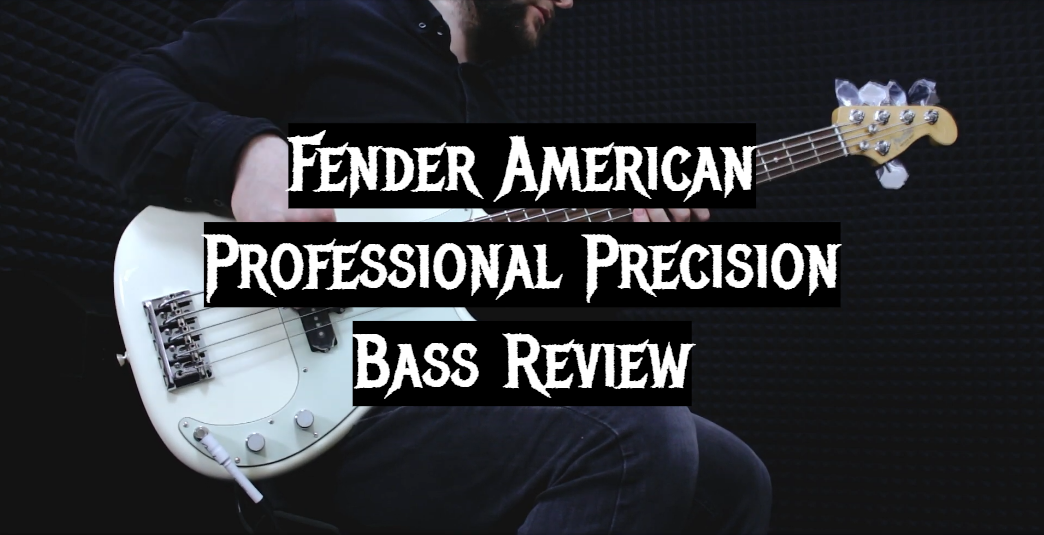

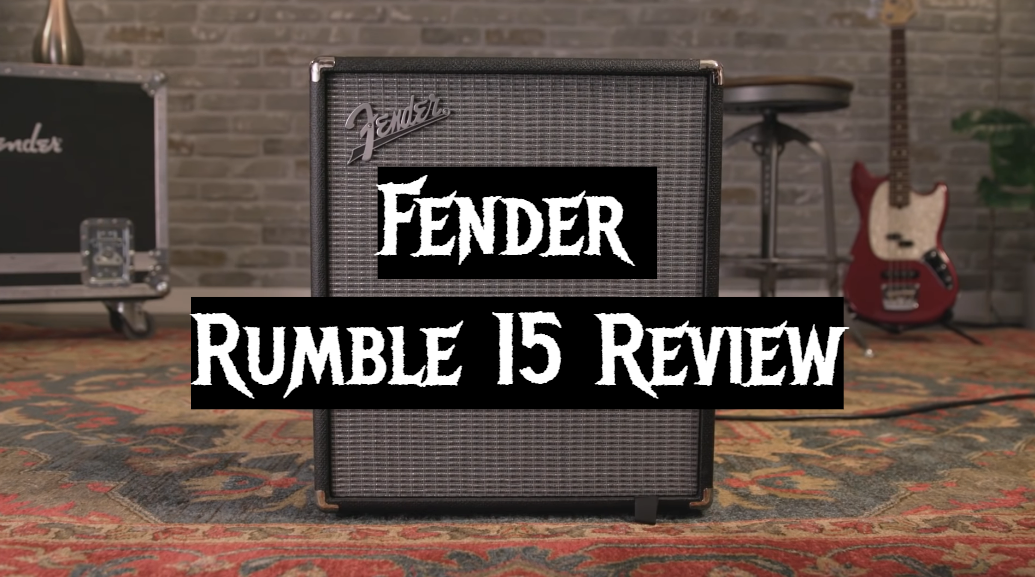
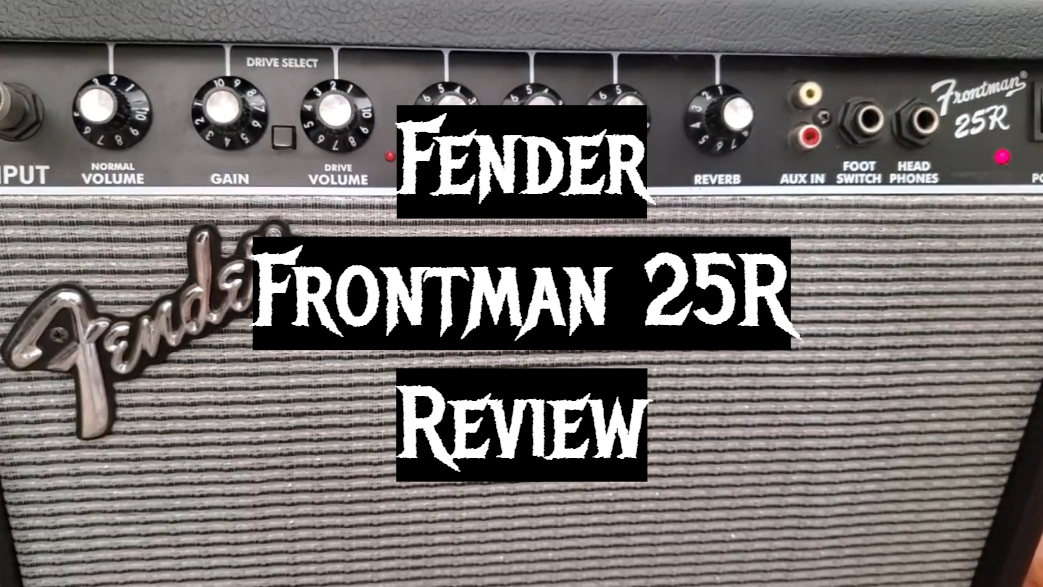
Leave a Reply